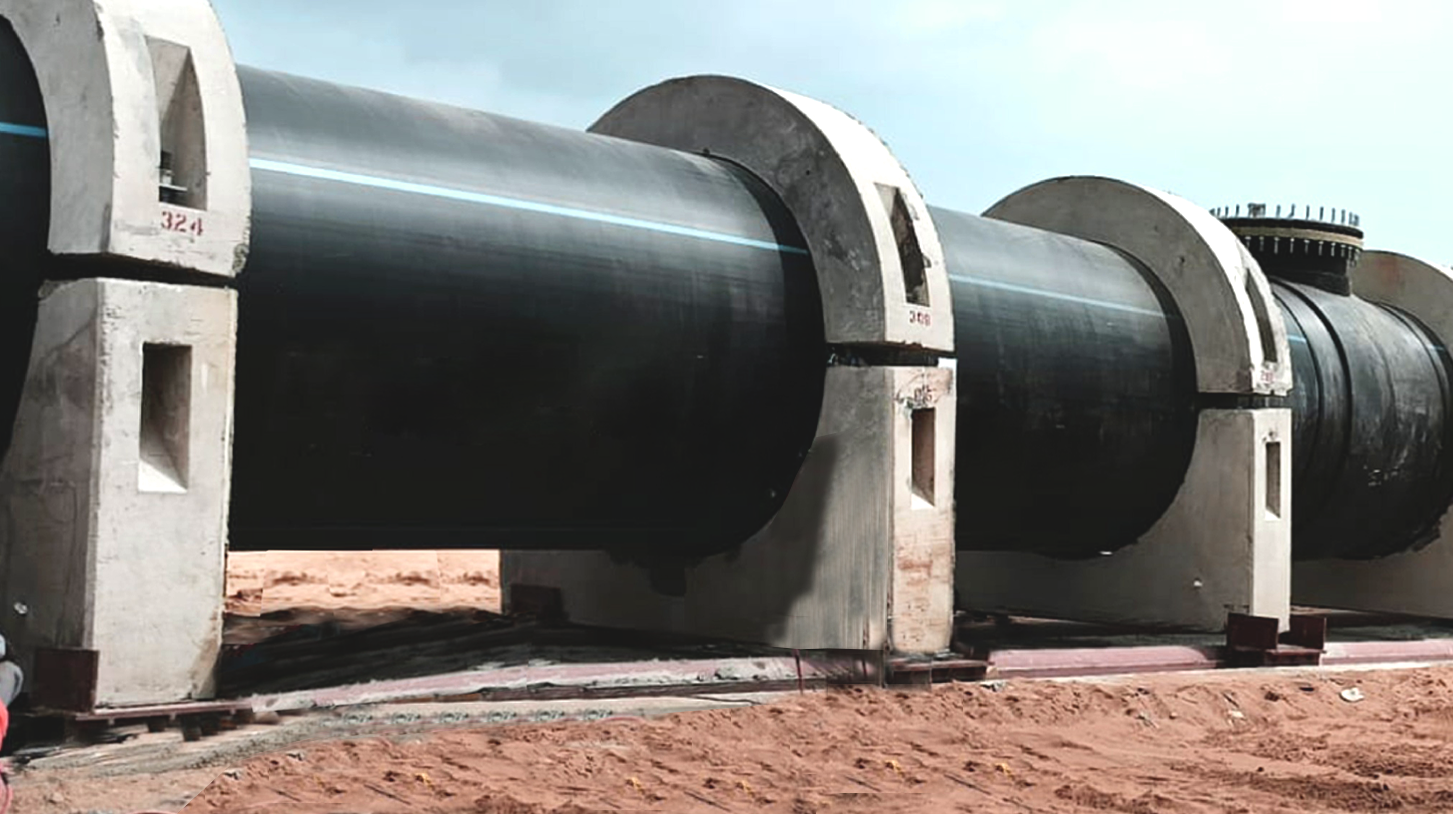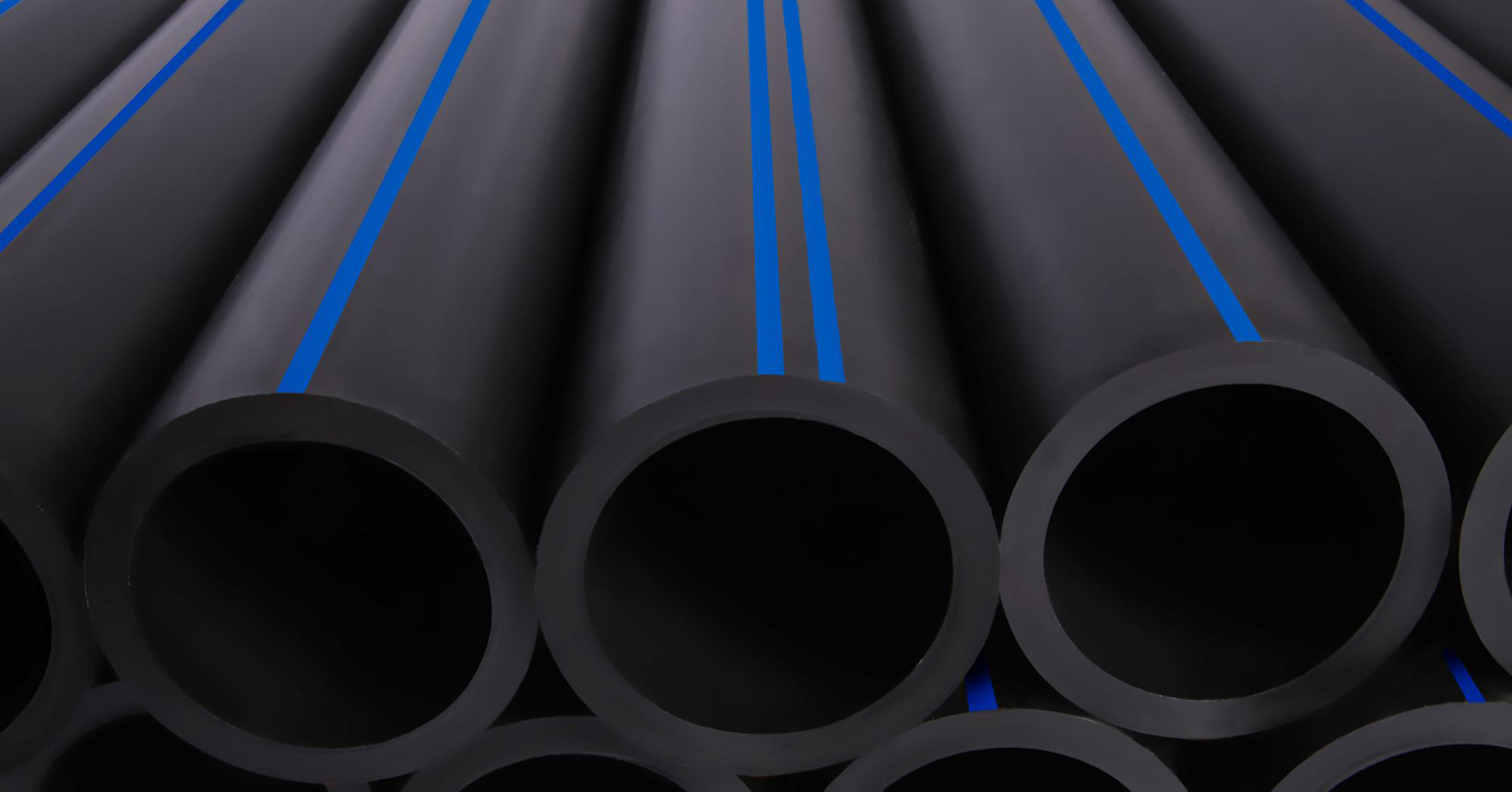custom hdpe pipe manufacturing Midland TX: Trends Shaping the Market
Explore the Manufacturing Refine Behind High-Quality HDPE Pipe and Its Applications
The manufacturing procedure of top notch HDPE pipelines is intricate and methodical. It starts with the selection of basic materials that enhance performance. Following this, ethylene undertakes polymerization to create material, which is then shaped with extrusion. Quality control is critical, making certain that the end product meets strict criteria. Nonetheless, the trip of HDPE pipelines doesn't finish with production. Their applications throughout various markets expose a broader importance worth examining.
Understanding HDPE: Residences and Advantages

High-density polyethylene (HDPE) is a versatile thermoplastic recognized for its toughness and resistance to numerous ecological factors. This material exhibits outstanding tensile strength, making it ideal for demanding applications. Its low-density structure adds to a lightweight product, facilitating convenience of handling and installment. HDPE likewise showcases exceptional resistance to chemicals, which decreases degradation when subjected to harsh substances.
The material's reduced wetness absorption better boosts its long life, making it suitable for usage in pipelines and tank. In addition, HDPE is immune to ultraviolet (UV) radiation, making certain that items preserve their honesty also when subjected to sunshine. Its flexibility allows for the creation of complex shapes without endangering strength. The eco-friendly nature of HDPE, usually obtained from recycled materials, contributes to its allure, promoting lasting techniques in manufacturing. In general, these residential or commercial properties and benefits make HDPE a preferred selection for various industrial and customer applications.
Resources Option for HDPE Production
The option of resources for HDPE manufacturing is vital to confirm the end product fulfills the preferred requirements and top quality requirements. High-density polyethylene (HDPE) is mainly generated from polymerized ethylene, originated from nonrenewable fuel sources such as gas or crude oil. The top quality of these feedstocks substantially influences the mechanical and thermal residential properties of the last HDPE.
Additives likewise play a substantial duty in boosting HDPE's performance, consisting of antioxidants, UV stabilizers, and colorants, which enhance durability and resistance to ecological factors. The selection process should consider not only the chemical structure of the raw materials but additionally their handling attributes to guarantee effective manufacturing.
The sourcing of raw materials need to focus on sustainability and compliance with environmental policies, as responsible practices are crucial in today's market. Ultimately, cautious basic material selection lays the structure for generating top notch HDPE pipelines appropriate for diverse applications.
The Extrusion Process: Forming HDPE Pipeline
The extrusion process plays an essential role in forming HDPE pipes, beginning with thorough material preparation techniques that guarantee suitable flow and uniformity. Just as essential is the style of the die, which straight affects the last measurements and surface area top quality of the pipe. With each other, these aspects add considerably to the efficiency and top quality of HDPE pipeline manufacturing.
Material Prep Work Strategies
Effective manufacturing of HDPE pipes starts with meticulous material prep work strategies, specifically the extrusion procedure. Throughout this stage, high-density polyethylene material is very first dried to eliminate moisture, guaranteeing suitable flow characteristics. The material is then fed right into the extruder, where it undergoes home heating and melting, changing right into a thick state. This heating procedure is thoroughly controlled to preserve the product's stability and efficiency. The liquified HDPE is forced with a die, shaping it into a continual pipe form. Appropriate temperature management throughout extrusion is crucial, as it straight affects the product's properties and the last item quality. As soon as formed, the HDPE pipe is cooled and reduced to specified lengths, ready for subsequent processing and applications.
Die Style Relevance
Accuracy in die style plays an essential function in the extrusion process of HDPE pipelines. The die offers as the last shaping tool, directly influencing the pipeline's dimensions, wall thickness, and surface area finish. A well-designed die warranties uniform material flow, decreasing problems such as irregularities and weak spots. The geometry of the die need to be optimized to fit the certain properties of HDPE, including its viscosity and thermal habits throughout extrusion. In addition, the cooling rate of the product as it goes through the die can significantly affect the pipe's architectural integrity. Subsequently, spending in advanced die innovation is vital for manufacturers aiming to create high-quality HDPE pipelines that meet sector criteria and client expectations.
Quality Assurance Measures in HDPE Production
Although different factors influence the high quality of HDPE pipe manufacturing, reliable top quality control actions are critical to ensure uniformity and dependability in the final item. Trick quality assurance practices include rigorous product inspection, validating that the raw polyethylene fulfills established criteria for pureness and thickness. During the extrusion process, criteria such as temperature, stress, and cooling time are carefully kept track of to preserve dimensional accuracy and architectural honesty
On top of that, post-production screening is essential; manufacturers typically perform hydrostatic examinations to assess the pipe's strength and resistance to stress. Visual assessments for surface area problems even more enhance quality control. Accreditation from pertinent standards companies, like ASTM or ISO, offers an added layer of integrity. By applying these extensive quality control measures, makers can decrease problems, improve efficiency, and guarantee that the HDPE pipes meet the certain needs of numerous applications, eventually causing customer contentment and rely on the item.
Applications of HDPE Pipe Throughout Industries
HDPE pipes are utilized across various fields because of their toughness and convenience. In water distribution here systems, they assure effective delivery, while in wastewater administration, they provide reputable services for waste transport. In addition, agricultural irrigation networks profit from HDPE's resistance to deterioration and adaptability, making it a suitable option for modern-day farming methods.

Water Distribution Solutions
A substantial number of sectors count on high-density polyethylene (HDPE) pipelines for reliable water circulation systems. Known for their durability and resistance to rust, HDPE pipelines are extensively utilized in local water supply networks, farming watering, and commercial applications. Their lightweight nature helps with very easy handling and installment, minimizing labor prices and time. Furthermore, HDPE pipelines can accommodate various pressure degrees, making them ideal for both low and high-pressure systems. hdpe pipe in stock Midland TX. The versatility of the product enables smooth assimilation right into existing facilities, minimizing the need for substantial excavation. HDPE's resistance to chemical leaching assurances that the water delivered continues to be safe and clean, making it a suitable choice for maintaining the quality of drinkable water throughout numerous markets.
Wastewater Monitoring Solutions
Effective water circulation systems additionally lead the way for cutting-edge wastewater monitoring remedies, where high-density polyethylene (HDPE) pipelines play a substantial duty. Prominent for their resilience and resistance to rust, HDPE pipelines are suitable for moving wastewater in numerous setups. Their versatility permits for simple setup in complicated settings, lessening the need for extensive excavation. In addition, HDPE's smooth interior surface minimizes rubbing, improving circulation rates and effectiveness. These pipes are additionally immune to chemical leaching, ensuring that impurities do not endanger the surrounding setting. Industries, municipalities, and treatment centers significantly count on HDPE pipelines for their dependability and long life, making them a favored selection for modern wastewater monitoring systems. This versatility underscores the important relevance of HDPE pipes throughout numerous applications.
Agricultural Watering Networks
Agricultural watering networks profit greatly from using high-density polyethylene (HDPE) pipelines, which supply efficient and dependable water delivery to plants. HDPE pipelines are lightweight, making them simple to transport and install, while their versatility permits for numerous configurations in diverse surfaces. These pipelines show superb resistance to rust, chemicals, and UV radiation, guaranteeing resilience in harsh farming atmospheres. Furthermore, their smooth indoor surface decreases rubbing loss, optimizing water flow and minimizing power prices connected with pumping. The durability of HDPE pipelines, commonly surpassing half a century, adds to decrease upkeep and substitute expenses. Consequently, farmers increasingly rely upon HDPE pipelines to enhance watering effectiveness and advertise lasting agricultural methods, ultimately causing boosted plant yields and resource conservation.
Future Patterns in HDPE Pipeline Innovation
As the need for sustainable and reliable framework grows, advancements in HDPE pipe modern technology are positioned to transform various sectors. Emerging trends consist of the combination of smart technologies, such as sensors and IoT abilities, which help with real-time tracking of pipe problems, decreasing upkeep prices and avoiding leakages. Furthermore, the advancement of innovative production methods, such as 3D printing, is allowing the production of complex, personalized pipeline layouts that provide to details job requirements.
The focus on recycling and circular economy techniques is driving the development of HDPE pipes made from recycled materials, enhancing sustainability. Boosted jointing approaches, such as electro-fusion and mechanical fittings, are additionally boosting setup effectiveness and integrity. Lastly, the expanding emphasis on environmental regulations is pushing producers to adopt greener production procedures, making sure that HDPE pipes not only meet market standards yet additionally foster a more sustainable future for framework advancement.
Often Asked Questions
Exactly How Does HDPE Contrast to Various Other Plastic Materials?
HDPE surpasses many various other plastic products relating to toughness, chemical resistance, and flexibility. Its reduced thickness and high tensile stamina make it excellent for different applications, frequently exceeding choices in both efficiency and durability.
What Are the Ecological Effects of HDPE Production?
The environmental effects of HDPE production consist of greenhouse gas exhausts, energy intake, and potential air pollution from producing processes. In addition, improper disposal can cause dirt and water contamination, increasing concerns regarding long-term ecological impacts.
Can HDPE Water Lines Be Reused?
Yes, HDPE pipes can be recycled. Numerous facilities accept utilized HDPE for handling, transforming it into brand-new items. This reusing adds to sustainability efforts, minimizing plastic waste while preserving sources and power in the production cycle.
What Is the Life Expectancy of HDPE Piping?

Just How Do Temperature Level Variants Impact HDPE Pipe Performance?
Temperature level variants substantially affect HDPE pipe performance, affecting adaptability and toughness. High temperatures can bring about softening, while low temperatures might trigger brittleness, ultimately influencing the pipe's resilience and viability for different applications in varied environments.